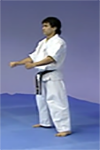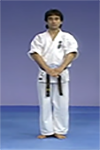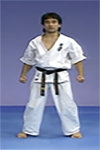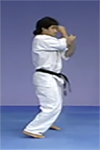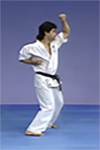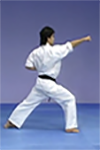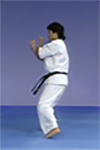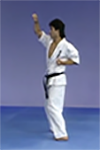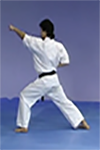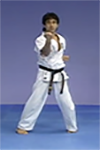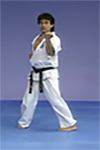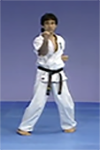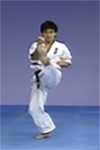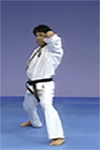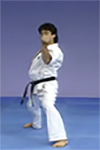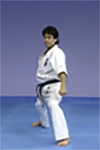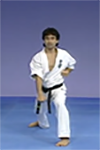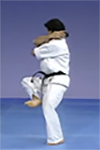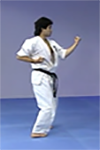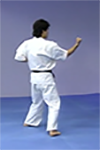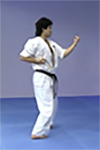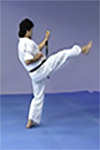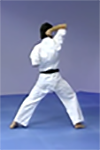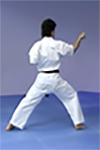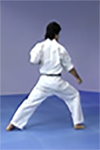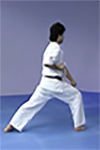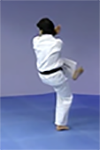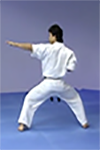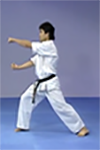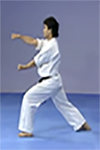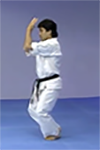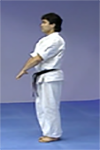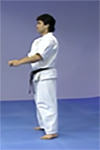Gekisai Dai - 撃塞大
Essentially, the two
The name
Gekisai Dai - 撃塞大
video
instructions
Video
source Youtube
Documentation
Kihon Waza
Dachi Waza
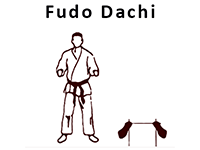 Fudo Dachi
Fudo Dachi
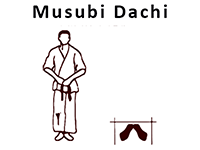 Mosubi Dachi
Mosubi Dachi
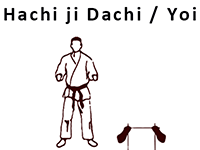 Joi Dachi
Joi Dachi
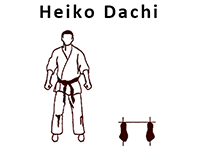 Heiko Dachi
Heiko Dachi
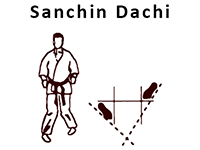 Sanchin Dachi
Sanchin Dachi Zenkutsu Dachi
Zenkutsu Dachi
 Kiba Dachi
Kiba Dachi
Te Waza
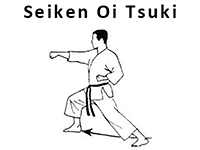 Seiken Jodan Oi Tsuki
Seiken Jodan Oi Tsuki
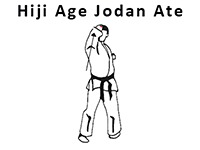 Hiji Age Jodan Ate
Hiji Age Jodan Ate
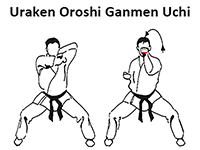 Uraken Oroshi Ganmen Uchi
Uraken Oroshi Ganmen Uchi
 Seiken Chudan Gyaku Tsuki
Seiken Chudan Gyaku Tsuki
Shuto Yoko Jodan Uchi
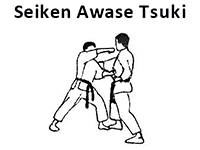 Seiken (Morote) Awase Tsuki
Seiken (Morote) Awase Tsuki
Uke Waza
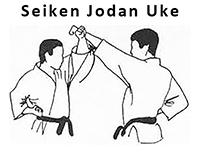 Seiken Jodan Uke
Seiken Jodan Uke
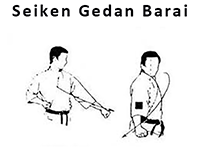 Seiken Gedan Barai
Seiken Gedan Barai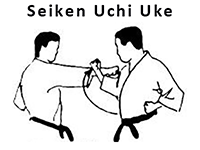 Seiken Uchi Uke
Seiken Uchi Uke
Geri Waza
 Chudan Mae Geri
Chudan Mae Geri
Kihon Jutsugo
Kamae - 構え, means posture or base. Kamae is to be differentiated from the word Dachi - 立ち. Dachi refers to the position of the body from the waist down, Kamae refers to the posture of the entire body, as well as encompassing one's mental readiness.Kamae
Mokusō - 黙想, means meditation, part of the training of mushin; the call to meditate.Mokuso
Hajime - 始め, means begin.Hajime
Ibuki is karate’s hard breathing method. Ibuki breathing is a study of tension, which is necessary to truly understand relaxation. While ibuki breathing serves as a dynamic tension exercise, its true value is ki development, since it teaches the breathing control necessary for kiai. Ibuki breathing is performed in two ways, one long, and one short. Ibuki
Hikite - 引き手 means drawing hand: Hiku - 引き, to draw or pull, and Te - 手, the hand.Hikite
Ashi BaraiAshi Barai
KiaiKiai
Naore - 直れ, is a command to go back into the beginning Kamae.Naore
Yasumi - 休み, is a command to rest or relax.Yasume
